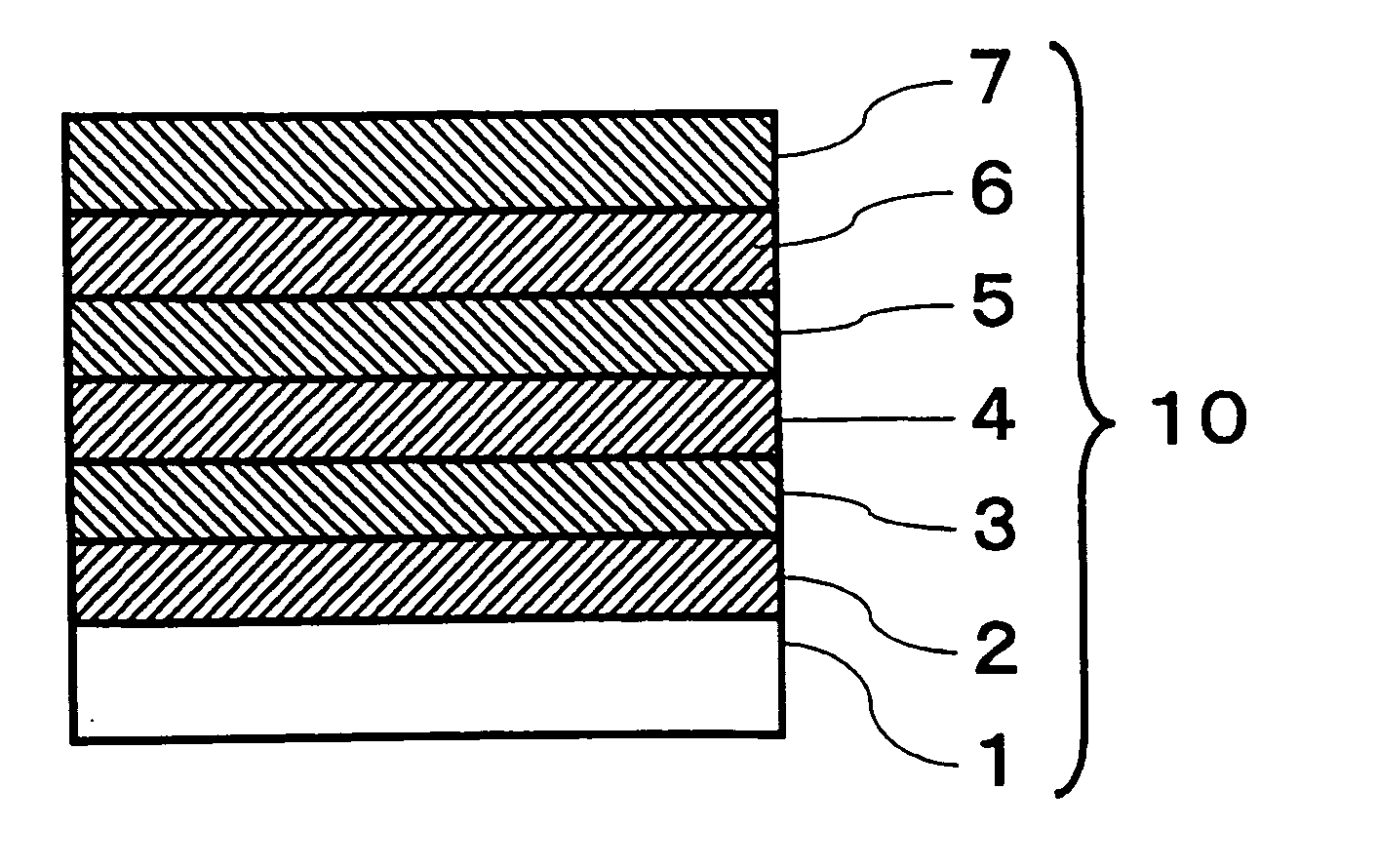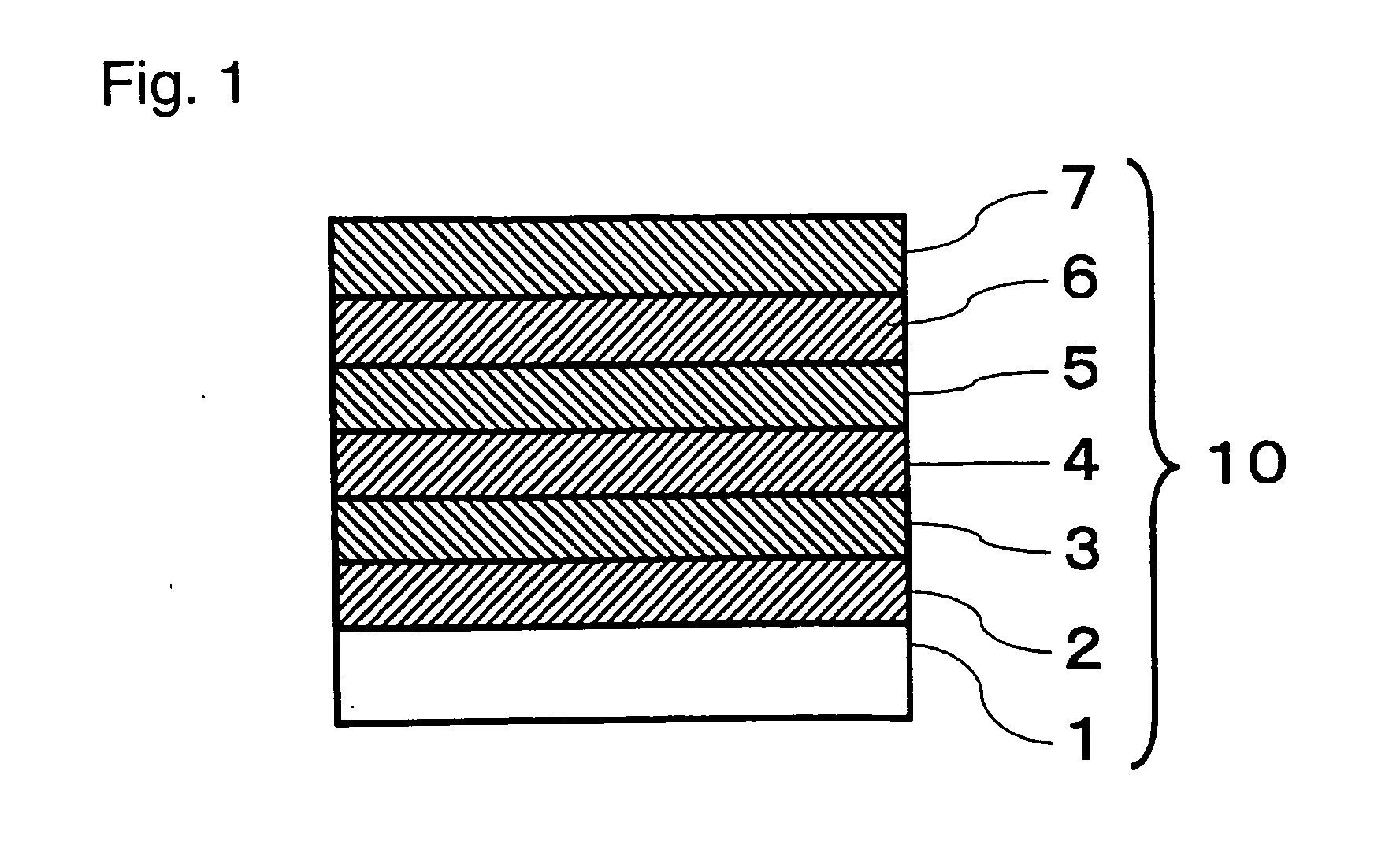High reflectance mirror
a high reflectance, mirror technology, applied in the field of reflection mirrors, can solve the problems of low light intensity of the screen, fluctuation of the reflected color, low durability to moisture resistance,
- Summary
- Abstract
- Description
- Claims
- Application Information
AI Technical Summary
Benefits of technology
Problems solved by technology
Method used
Image
Examples
example 1
[0042] A cleaned soda lime glass plate (100 mm×100 mm×2 mm thick) as a substrate was placed in a vacuum vessel. As targets, a target made of zinc oxide added with aluminum (the content of aluminum oxide: 3 mass %, the content of zinc oxide: 97 mass %), a target made of a silver alloy added with Au (the content of Au: 2 at %, the content of silver: 98 at %), a target made of zinc oxide added with gallium (the content of gallium oxide: 5.7 mass %, the content of zinc oxide: 94.3 mass %), a target made of silicon metal (a boron-doped polycrystal target, the content of silicon: 99.999 mass %) and a target made of niobium metal (the content of niobium: 99.9 mass %) were respectively placed on respective cathodes at positions opposing the substrate, and the vacuum vessel was evacuated to 2×10−3 Pa. The size of the surface of each target was 177.8 mm×381 mm. Then, the films of the below-mentioned A) to E) were formed sequentially to obtain a high reflectance mirror.
[0043] A) Formation of ...
example 2
[0064] A high reflectance mirror is produced in the same manner as Example 1 except that an oxygen gas is fed as a sputtering gas into a vacuum vessel at 450 sccm, and an AC reactive sputtering method is carried out using a target made of zirconium metal (the content of zirconium: 99.9 mass %) under an input power of 2 kW to form a zirconium oxide film (the refractive index at a wavelength of 550 nm: 2.11, the extinction coefficient: 0) as a high refractive index film in a film thickness of 47 nm, instead of forming the niobium oxide film as the high refractive index film in Example 1.
[0065] The produced high refractive index film is evaluated in the same ways as Example 1. The results of (1) to (4) are shown in Table 1, and the result of (5) is shown in Table 2.
example 3
[0066] A high reflectance mirror is produced in the same manner as Example 1 except that an oxygen gas is fed as a sputtering gas into a vacuum vessel at a rate of 450 sccm, and an AC reactive sputtering method is carried out using a target made of tantalum metal (the content of tantalum: 99.99 mass %) under an input power of 2 kW to form a tantalum oxide film (the refractive index at a wavelength of 550 nm: 2.03, the extinction coefficient: 0) as a high refractive index film, in a film thickness of 49 nm, instead of forming the niobium oxide film as the high refractive index film in Example 1.
[0067] The produced high reflectance mirror is evaluated in the same ways as Example 1. The results of (1) to (4) are shown in Table 1, and the result of (5) is shown in Table 2.
PUM
| Property | Measurement | Unit |
|---|---|---|
| Percent by mass | aaaaa | aaaaa |
| Thickness | aaaaa | aaaaa |
| Thickness | aaaaa | aaaaa |
Abstract
Description
Claims
Application Information
 Login to View More
Login to View More - R&D
- Intellectual Property
- Life Sciences
- Materials
- Tech Scout
- Unparalleled Data Quality
- Higher Quality Content
- 60% Fewer Hallucinations
Browse by: Latest US Patents, China's latest patents, Technical Efficacy Thesaurus, Application Domain, Technology Topic, Popular Technical Reports.
© 2025 PatSnap. All rights reserved.Legal|Privacy policy|Modern Slavery Act Transparency Statement|Sitemap|About US| Contact US: help@patsnap.com


